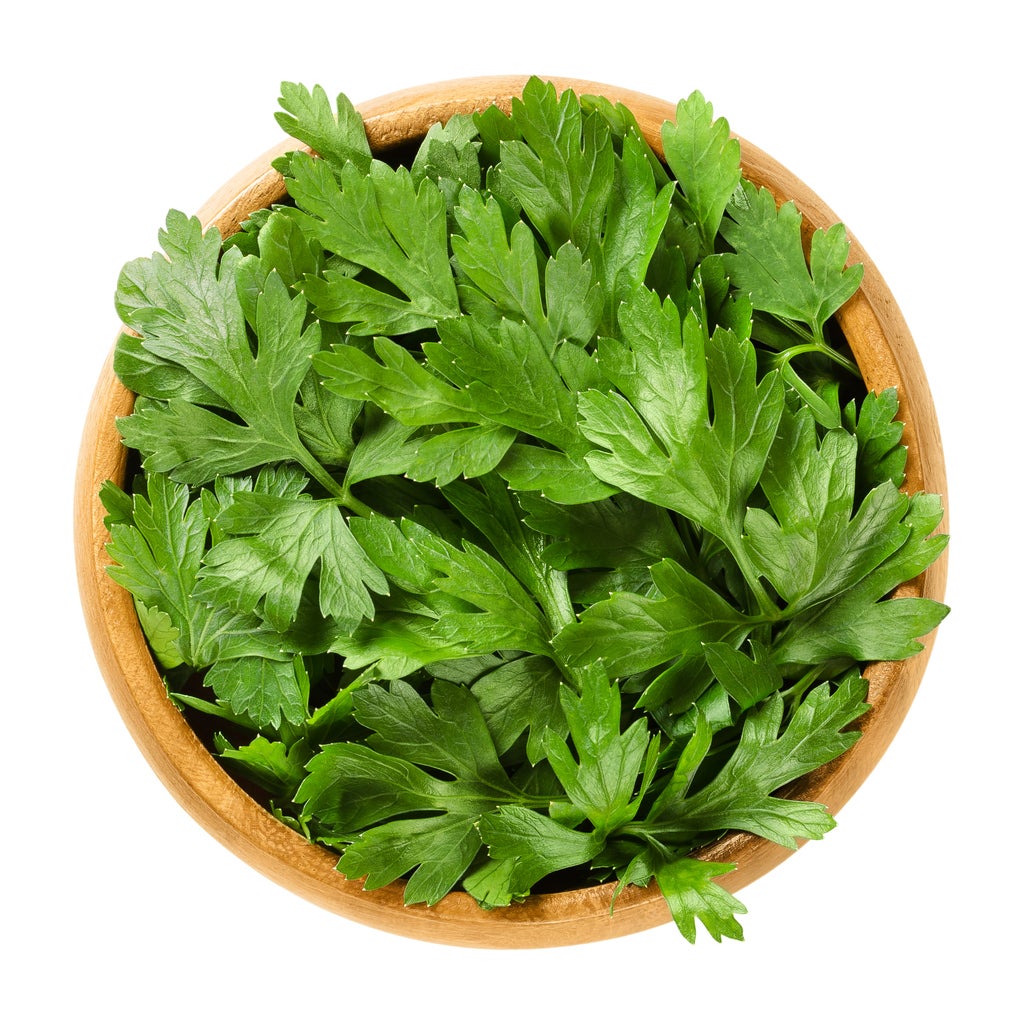What Is Titan Parsley: Tips For Growing Titan Parsley Herbs


Curly parsley may be king as a garnish, but flat leaf parsley has a stronger, more robust flavor. Titan Italian parsley is an excellent example of a flat leaf variety. What is Titan parsley? It is a rather small leaved cultivar that grows in a wide variety of soils. Growing Titan parsley is possible in full sun or even light shade, adding to its versatility.
What is Titan Parsley?
Titan parsley is a neat, compact plant with small leaves packed with flavor. This adaptable parsley is a biennial and will need to be sown every two years for a consistent supply. It is easy to grow and has low maintenance needs and few disease or pest issues. Learning how to grow Titan parsley will make it easier to add this herb to your culinary cupboard.
The delicately noded leaves of Titan parsley almost resemble coriander (cilantro) but have a deeper green hue. Also, the smell and flavor are nothing like coriander but have a clean, almost grassy, taste and aroma. Plants can grow 14 inches (35 cm.) tall and have erect, slender stems. You can grow this parsley variety in USDA zones 5 through 9.
If allowed to bolt, the plant produces tiny, airy white flowers that are attractive to bees and some butterflies.
How to Grow Titan Parsley
Titan Italian parsley can grow in clay, loam, sandy, and most other types of soil. The very flexible plant readily germinates from seed directly sown in early spring. It even performs well in partially shady locations.
Expect germination in 14 to 30 days in temperatures of 65 to 70 degrees F. (18-21 C.). Thin the seeds to 12 inches (31 cm.) apart. In very cold regions, try growing Titan parsley indoors in flats and transplant outside when all danger of frost has passed.
Like most herbs, Titan is extremely hardy and can handle extreme conditions fairly well. It will survive brief periods of drought but does best with regular water. Few insect pests bother the plant. In fact, it attracts beneficial insects, such as ladybugs.
Sign up for the Gardening Know How newsletter today and receive a free copy of our e-book "How to Grow Delicious Tomatoes".
Side dress with compost in spring and spread organic mulch around the base of the plants in regions with freezing temperatures. Remove the flower heads to prevent seeding and redirection of the plant's energy into blooms rather than leaves.
Cut leaves any time as a garnish, parsley sauce, flavoring for soups and stews, or to dry for winter use.

Bonnie Grant is a professional landscaper with a Certification in Urban Gardening. She has been gardening and writing for 15 years. A former professional chef, she has a passion for edible landscaping.